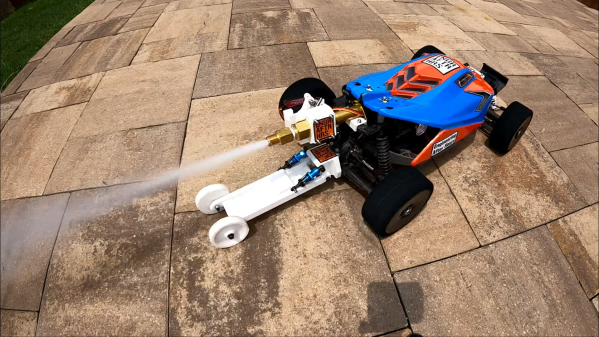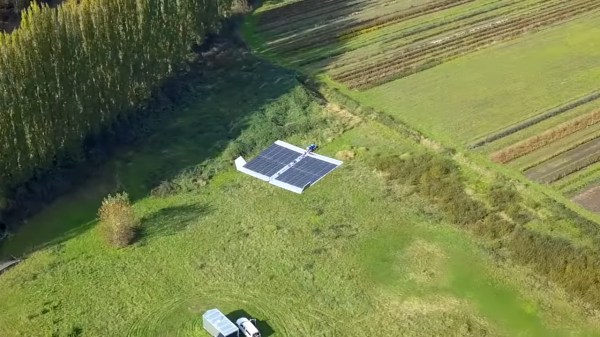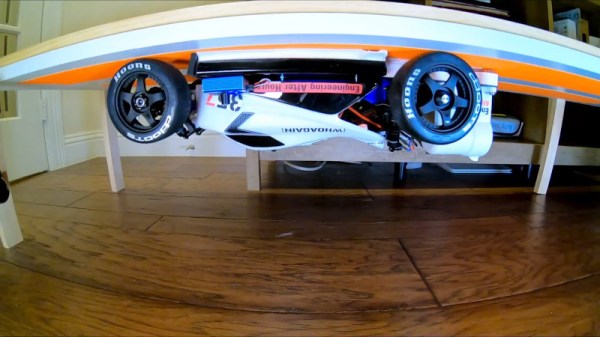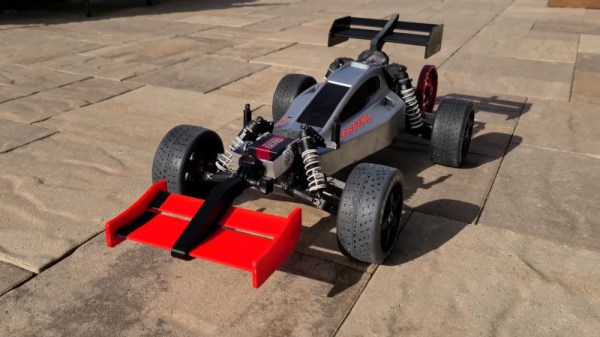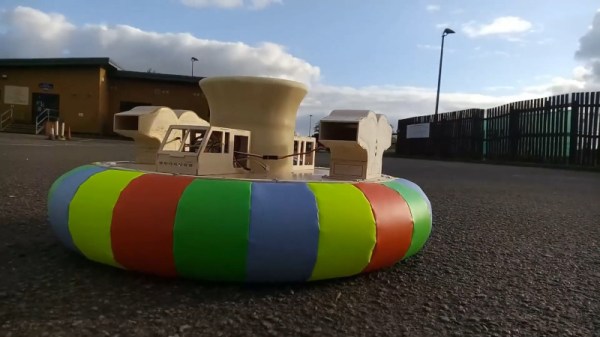Tesla have boldly claimed that one day they’ll ship a Roadster complete with a cold-gas thruster for truly ridiculous acceleration. Whether or not that ever comes to pass remains to be seen, but [Engineering After Hours] decided to try out the technology on an RC car instead.
The thruster uses a pair of disposable CO2 canisters to deliver 1770 g of thrust via a converging-diverging nozzle. Actuated by servos and a simple valve, the system dumps the high-pressure CO2 to help accelerate the car up to speed. Paired with sticky tires and a powerful brushless motor, the plan was to try and beat Tesla’s claimed 1.1 second 0-60mph acceleration figure for the thruster-boosted roadster.
Unfortunately, the high center of gravity of the RC car led to stability issues, largely due to the mounting of the thruster itself. Additionally, the high weight of the car – around 4.3kg – meant that at best, the thruster would only add 0.5g to the vehicle’s acceleration.
While the car didn’t net a quick 0-60 time, it’s still neat to see a cold gas thruster on an RC car. It may not have been a Tesla-beater like some earlier projects, but it was cool all the same. Video after the break.

